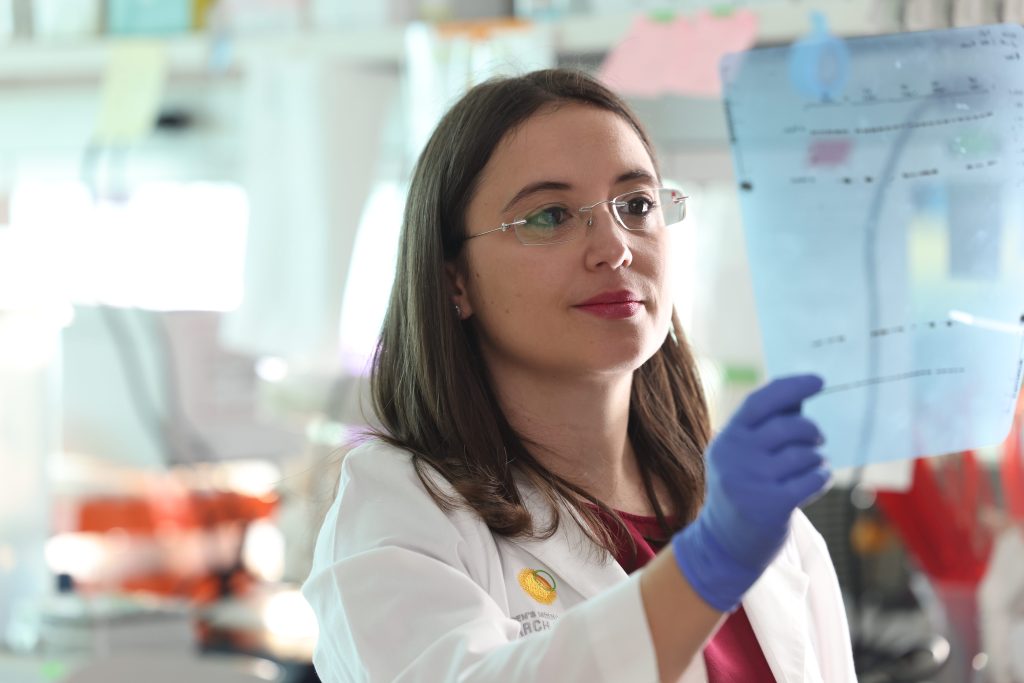
According to statistics from the National Cancer Institute, 10,380 children in the U.S. under the age of 15 will be diagnosed with cancer this year. Although advances in treatment have increased the five-year survival rate from 58 percent to 80 percent, cancer in children remains the leading cause of disease-related death among children and teenagers. But, the outlook is improving thanks to cutting-edge biomedical research that contributes to the understanding of the disease and the discovery of new treatment options.
The interdisciplinary group of scientists and physicians at the Children’s Medical Center Research Institute at UT Southwestern (CRI) has made significant strides in childhood cancer research, including:
Discovering genes that are critical for childhood cancers.
Each year in the U.S., 700 children are newly diagnosed with neuroblastoma, 500 with Wilms tumor, and 100 with hepatoblastoma. Finding new treatment methods for these children requires a deeper understanding of how gene expression can fuel cancer development.
Researchers in Dr. Hao Zhu’s lab found that LIN28B – a gene normally turned on in fetal tissues but not in adult tissues – is an important cancer-causing gene in childhood malignancies. Although other groups have shown LIN28B’s involvement in cancer, Zhu’s lab pioneered efforts to understand how this gene functions inside the body of an animal. Focusing specifically on hepatoblastoma, which accounts for nearly 80 percent of all liver tumors in children, researchers investigated how significantly increasing LIN28B or deleting the gene would affect cancer in mice.
They found that overproduction of LIN28B causes hepatoblastoma while blocking LIN28B impairs cancer growth. LIN28B is a particularly attractive therapeutic target because it is ordinarily only expressed in embryos, so blocking it in children should specifically hinder cancer growth without introducing many unfavorable effects. Knowing pediatric liver cancers depend on this gene opens up the possibility that one day patients could be treated with new strategies other than chemotherapy.
Increasing the safety and effectiveness of bone marrow transplantation.
Bone marrow transplants save thousands of lives each year by restoring the blood-forming capacity of patients following chemotherapy or other medical conditions. Bone marrow transplants are not without risks. It can take months for patients to recover, and in some cases, patients may die as a result of infections or other complications. To improve the safety and effectiveness of bone marrow transplants, investigators must better understand the microenvironment of blood-forming stem cells – the active ingredient in bone marrow transplants.
Historically, little has been known about this microenvironment, but Dr. Sean Morrison and his colleagues have changed that. Over the last five years, they have made several groundbreaking discoveries by characterizing cells and growth factors in the bone marrow that sustain blood-forming stem cells throughout life and regulate the production of blood cells.
They discovered that stem cells live around blood vessels in the bone marrow and that endothelial cells and other stromal cells around the blood vessels make the growth factors that sustain the stem cells. The identification of these cells has made it possible to search for new growth factors in the bone marrow. New growth factors that promote stem-cell function or blood-cell production could accelerate the recovery of patients after bone marrow transplantation or chemotherapy, shortening their window of vulnerability to potentially life-threatening infections.
The Morrison laboratory has already started to identify such growth factors, and researchers hope to continue to develop new therapeutic approaches that improve the safety of bone marrow transplants.
Mapping metabolic pathways in cancer to develop better treatment options.
Proper control of metabolism is required for essentially every basic biological process, including cell growth and division. Altered metabolism at the cellular level is a major feature of cancer since tumor cells must reprogram their metabolism to support excessive cell growth. Finding and understanding how these growth-promoting metabolic activities occur in cancer is a key step toward developing new drugs and treatments to inhibit them.
Researchers from Dr. Ralph DeBerardinis’ lab have identified new metabolic pathways that occur when cancer cells rewire metabolic networks to maximize their growth. The DeBerardinis lab has also pioneered techniques to measure cancer metabolism directly in human tumors, providing the most comprehensive and accurate views of tumor metabolism to date.
Traditionally, lung tumors can be diagnosed using a clinical form of glucose imaging called FDG-PET scanning because the ability to take up glucose (sugar) is a well-known metabolic feature of human lung cancer. It was unknown, however, how these tumors used glucose to fuel metabolic pathways. The DeBerardinis scientists mapped the fate of glucose in human lung tumors and identified several metabolic differences between tumors and healthy lung tissue. They also showed that individual tumors, and even regions within the same tumor, used strikingly different metabolic activities to support energy formation.
This led to the development of a magnetic resonance imaging technique to predict metabolic behavior in tumors before surgery, providing a completely new approach to studying metabolism in human cancer. This work is expected to lead to better ways to exploit metabolic alterations to improve cancer diagnosis and therapy, especially when applied to childhood cancers.



